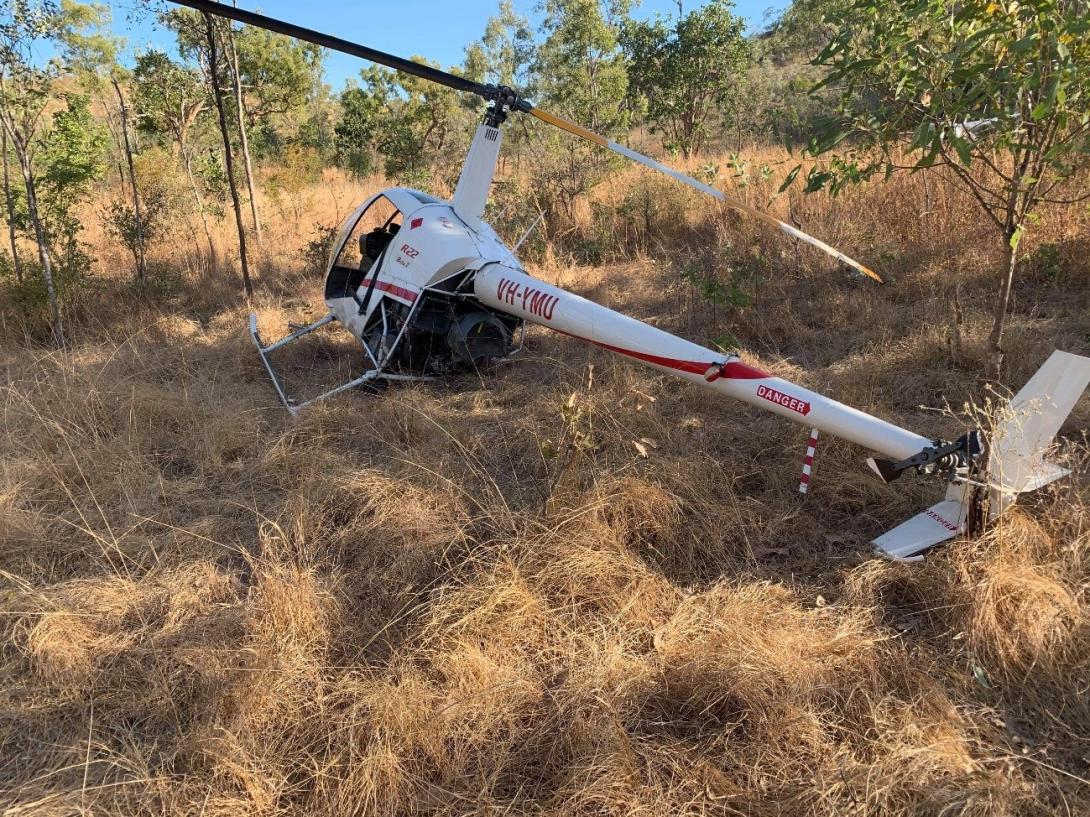
|
Key points
|
An Australian Transport Safety Bureau investigation found evidence of fatigue cracking in the fanwheel assembly of a Robinson R22 helicopter, which collided with terrain after a sudden loss of rotor drive at a low altitude.
On 16 August 2020, the pilot and sole occupant of an R22 was conducting mustering at a property near McArthur River Mine in the Northern Territory.
While hovering 60 ft above the ground, the helicopter experienced a sudden loss of rotor drive, resulting in a rapid loss of height and collision with terrain. The pilot sustained serious injuries, and the helicopter was substantially damaged.
An ATSB investigation found evidence of fatigue cracking in the helicopter’s cooling fanwheel outer support ring, and in the welded region of two vanes of the fanwheel assembly.
“These fatigue cracks probably weakened the fanwheel structure sufficiently for it to break-up in flight,” ATSB Director Transport Safety Stuart Macleod said.
This caused an imbalance which likely led the forward drive belt to migrate off the drive sheaves, resulting in a loss of rotor drive.
The ATSB’s report notes cracking of Robinson fanwheels in the vane weldment has been identified to occur in a limited number of the R22 fleet, however this was the first instance where the cracking had progressed to the point of in-flight failure.
“The circumstances of this accident are an important reminder for pilots and maintainers to pay particular attention to the installation, maintenance, and ongoing inspection of critical components of the drive systems of both Robinson R22 and larger R44 helicopters,” Mr Macleod said.
The ATSB’s final report also notes that many Robinson operators are aware that cracking can occur at the welded regions of the cooling fanwheel.
“This awareness, however, is not reflected in CASA’s Defect Reporting Service data, suggesting such instances are under-reported,” Mr Macleod said.
“The non-reporting of defects prevents the sharing of knowledge to the wider aviation community and the identification of emerging issues.
“Defect reporting benefits the aviation industry. It allows CASA to create a database, which is used to identify trends in design and maintenance reliability of aircraft systems and components and is a publicly accessible service.”
Additionally, while not a contributing factor in the accident, the ATSB found the details associated with the helicopter’s emergency locator transmitter (ELT) had not been updated since the helicopter was recently purchased by the operator.
This meant that when the transmitter automatically activated during the accident sequence, the Joint Rescue Coordination Centre was delayed in confirming an accident had taken place.
“Fortunately, this accident was reacted to quickly by others involved in the mustering,” Mr Macleod said.
“But where an aircraft is operating alone, any delay to the search and rescue response could be critical to occupant survival.”
Aircraft operators should ensure details associated with emergency locator transmitters are current. (All 406 MHz ELTs are required to be registered with the Australian Maritime Safety Authority.)


